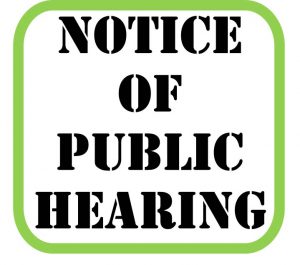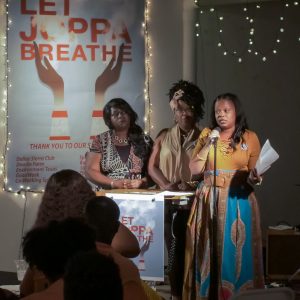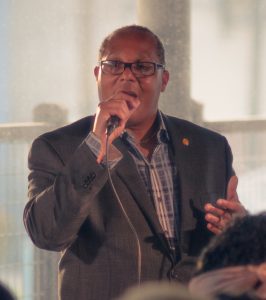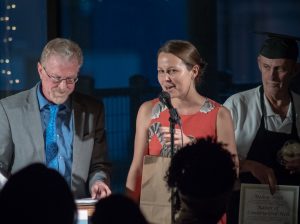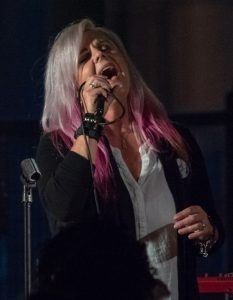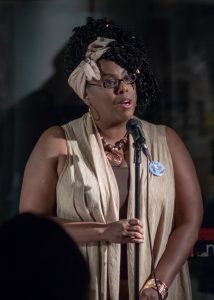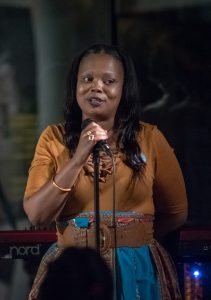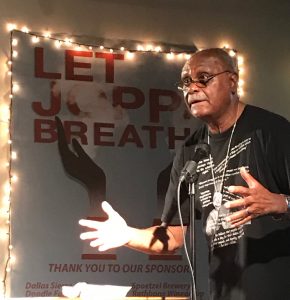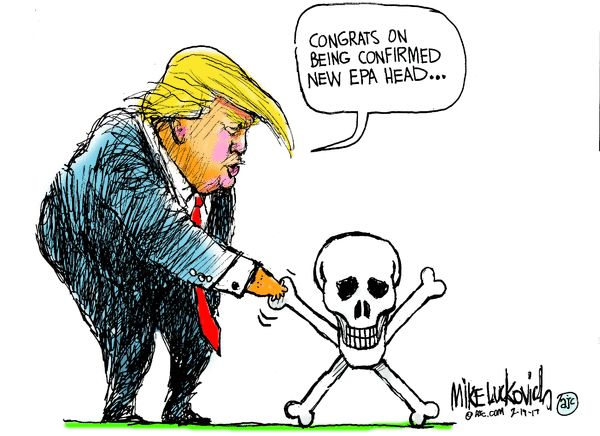Citizen Action
THE CLEAN AIR FUND THAT TIME FORGOT
Over a decade ago $500,000 was collected from North Texas local governments to protect Texas air.
It’s been sitting in a bank account ever since. Until recently, not too many people even knew it existed.
Now, citizens want to use a part of it to build a world-class 21st-Century air monitoring network for DFW.
__________________________________________
In 2006, then-Dallas Mayor Laura Miller teamed up with Houston Mayor Bill White and organized a coalition of Texas local governments to oppose the “fast-track” permitting of a dozen new coal plants Governor Rick Perry was pushing.
15 North Texas cities, Houston, and McLennan County (Waco) established the “Texas Clean Air Cities Coalition” to fund a legal team and the technical expertise needed to take on not only the big utility companies, but Perry and the State of Texas as well.
But before the battles could begin, a settlement was reached that cancelled all but one of the coal plants. The approximately $500,000 raised by the Coalition to wage clean air war was not needed now. Instead of reimbursing the separate contributors, it was kept in total by the Coalition, possibly because it had already been budgeted to “protect Texas air.”
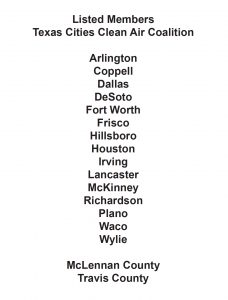
And there it’s sat ever since. With each new election cycle, the number of local elected officials who knew about the fund got smaller and smaller, until there was hardly any institutional memory of the Coalition or its half-million dollar fund left at all.
Downwinders only recently found about the money in the course of discussing funding of the new regional air quality monitoring network we’re working to establish with local policymakers.
While visiting with Dallas Council Member Scott Griggs about Dallas establishing such a network in partnership with Plano and Dallas County, CM Griggs mentioned the Texas Clean Air Cities Coalition and the $500,000 it had accrued, and asked us how our Network idea was different than the TCACC mission. We consider ourselves the premiere clean air watchdog group in DFW but we had no idea the Coalition or its fund was still around.
And, as it turns out, Griggs is the “Principal Officer” of the fund.
Needless to say, we were gobsmacked.
After reviewing some paperwork on the Coalition in Griggs’ office, we answered his question by suggesting that while the original goal of TCACC was to actively oppose those “fast-tracked” coal plant permits, the mission of the monitor network was to gather air quality information for public health purposes.
But on closer examination, we did notice similarities. Many of the municipalities that contributed to the Coalition fund are the same ones that are now interested in participating in the new monitor network, which like the Coalition, is a regional effort. The Mission of the Coalition is “to protect Texas air” primarily, but not exclusively through permit opposition. The spirit, if not the mechanics of the Coalition and Network are originating out of the same concern for public health.
That being said, extracting the money from the fund for modern use could be a convoluted affair. Despite the broad executive 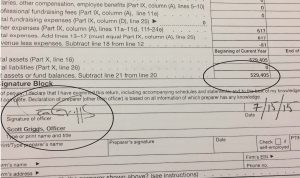 powers given to the Principal Officer in the Coalition’s by-laws, including the authority to commence litigation and intervene in permit proceedings, they don’t address air quality monitoring directly per se. It would appear to take a vote of the remaining Coalition members to ratify a new expenditure for the regional monitoring network, but it’s not clear who they are.
powers given to the Principal Officer in the Coalition’s by-laws, including the authority to commence litigation and intervene in permit proceedings, they don’t address air quality monitoring directly per se. It would appear to take a vote of the remaining Coalition members to ratify a new expenditure for the regional monitoring network, but it’s not clear who they are.
Of the five Coalition officer positions listed in the paperwork Downwinders received from Griggs, three would appear to be vacant, with no one representing Houston, Waco, or Irving due to retirements or elections. Only Griggs and Arlington City Council member Kathryn Wilemon, who both term out in May 2019, remain in elected office.
The discovery of the Coalition fund in 2018 raises all sorts of questions about why it didn’t get used over the last decade of air quality problems. Although there hasn’t been another tsunami of coal plants proposed, there’s still cement plant plants burning industrial waste, still oil and gas facilities still releasing way too much methane, still battles over batch plants in places like West Dallas and Joppa that the money could have gone to…but didn’t. Advocates like Downwinders didn’t even know about it to be able to make the case for its use. It’s a large policy failure on all fronts, that perhaps can be partially redeemed now by spending some of the the collected monies on another regional clean air initiative.
After learning of the Coalition fund, Downwinders asked Dr. David Lary of the University of Texas at Dallas Engineering Department to outline what kind of North Texas air monitoring network could be built with approximately HALF of the fund’s $530,000.
Dr. Lary is the author of the National Science Foundation grant that originally proposed the idea of grid air monitoring in DFW. He’s an expert in the field of high-tech low cost sensors and just got a large US Army contract for testing sensor equipment for the nation’s armed forces.
What he suggested was a 200 + sensor network, operating mostly on solar power and using wifi to bring real time air quality information to the regions seven million residents..for a low, low price of $280,000. This is his itemization:
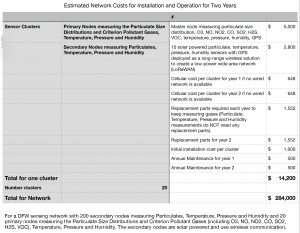
All previous plans had any regional monitoring network growing slowly by charging affordable fees for purchase and installation of sensors. If there’s a large clean air fund that could pay for the immediate build-out, it would propel DFW into the front ranks of “smart cities” and provide public health benefits much sooner.
Now that a City Council Quality of Life Committee hearing has been set for Dallas to decide whether to join the monitor network, the opportunities the fund could provide deserve overdue attention. The question of what role the fund can or should play in paying for a new regional clean air network will be important. Having squandered the ability to provide the kind of assistance it was created for over a decade ago, let’s hope current officials don’t make the same mistake and ignore public health…again.
Dallas City Council Committee Sets August 27th Hearing on Joining New Regional Air Quality Monitoring Network
WE NEED YOU
TO SPEAK OUT….
FOR CLEAN AIR!….
FOR PUBLIC HEALTH!….
FOR ENVIRONMENTAL JUSTICE!…..
FOR SCIENCE!
MONDAY, AUGUST 27th
9 AM
ROOM 6 ES
DALLAS CITY HALL
1500 MARILLA
DALLAS CITY COUNCIL
QUALITY OF LIFE COMMITTEE
PUBLIC HEARING:
Should Dallas join Dallas County and Plano in establishing a new regional air quality monitoring network
Share the FaceBook Event Page 
Dallas residents’ Right-to-Know what’s in the air they’re breathing could take a big step on Monday, August 27th.
That’s when the Dallas City Council’s Quality of Life Committee will hold a public hearing to decide if the City should join a new regional air quality monitoring network. It’s the most important decision concerning Dallas city-wide air quality in years.
Why? Because information is power.
Despite the fact you breath lots more air than you eat food or drink water, product labeling allows you to know more about what you’re putting in your stomach than what you’re putting in your lungs. A 21st-Century air monitoring network would begin to correct that imbalance.
Unlike the current handful of monitors operated by the Texas Commission on Environmental Quality (TCEQ) and EPA, this new local network would have hundreds of small high-tech, low-cost sensors and they’d be reporting their information in real time on a phone-accessible app.
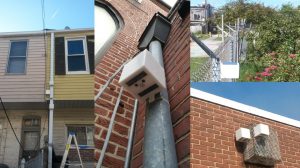 Despite being the home to 2.5 million people, and covering an area slightly smaller than the state of Rhode Island, Dallas County has only a single official monitor for deadly Particulate Matter pollution you can access online. Unless you live within close proximity of that one monitor you don’t have much idea of what kind of crap you’re inhaling.
Despite being the home to 2.5 million people, and covering an area slightly smaller than the state of Rhode Island, Dallas County has only a single official monitor for deadly Particulate Matter pollution you can access online. Unless you live within close proximity of that one monitor you don’t have much idea of what kind of crap you’re inhaling.
Being able to access real time air quality information no matter where you in DFW are has the potential to transform personal habits and public policy.
Residents with asthma or other breathing problems will have a much better picture of the air they’re actually being exposed to, down to the specific neighborhood or even street block. They can pro-actively plot a path to avoid polluted parts of town, or wait to take that walk or run.
Hotspots of pollution will be more readily identified by the people most affected by them. And, if we organize, that means they’ll get more notice from policymakers too.
Public health officials will be able to track school absentee rates with “bad air days.” City traffic engineers can time stoplights to reduce vehicle pollution. We’ll know which neighborhoods already experience a lot of air pollution and shouldn’t be candidates for siting new industrial facilities.
This is why the Dallas City Hall IT staff not only included high tech air quality monitoring in the category of “Public Health and Safety” but also “Equity and Empowerment.” This network and the information it provides can be a powerful tool for citizens.
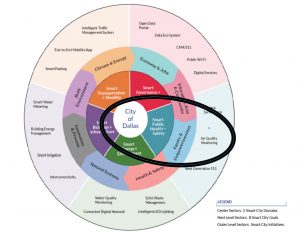
There are many ramifications to having this information available – some obvious, some we can’t imagine yet. High-tech air quality monitoring is one of the most useful applications of emerging “smart cities” technology.
Chicago is installing a grid of over 500 air quality sensors. Baltimore is doing the same. LA is committed to at least 100. Even Chattanooga, Tennessee has its own network. Now DFW, home to some of the worst air in the country for decades, has a chance to do the same.
Dallas’ Quality of Life Committee is Chaired by three-term council veteran Sandy Greyson, and includes rumored Mayoral candidate Scott Griggs, Mark Clayton, Omar Narvaez, Jennifer Staubach-Gates, Adam McGough, and Ricky Callahan.
If the Committee votes to join the Network, it’s recommendations would then be forwarded to the the entire 15-member City Council for formal approval.
As proposed, The North Texas Clean Air Network would be administered by a board that includes public health experts from Parkland and the Dallas County Medical Society, officials from every city, county, hospital or school district that become members and public interest advocates. This board would decide where to put new monitors, insure their technical proficiency, and help educate the public about the network.
Officially, it’s chartered goals are to
1. Provide the best, most up-to-date factual information about local air quality by supervising the implementation and maintenance of a publicly accessible, secure, and scientifically credible regional air sensor network providing simultaneous real time air quality information from multiple locations within member or contracted jurisdictions via the World Wide Web.
2. Provide fact-based public education resources on local air quality.
3. Support scientific research on local air quality by local colleges, universities, hospitals and schools.
4. Work with regulatory agencies and entities to further local clean air goals.
The Network began as a National Science Foundation grant proposal led by Dr. David Lary of UTD. It requested funding for dense concentrations of monitors in Plano and Southeast Fort Worth. It got a rare call back by the NSF, but no money.
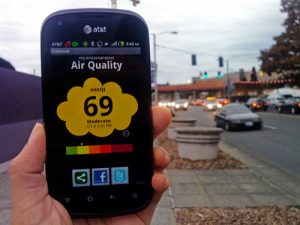 Still committed to the idea, the NSF grant partners then began building the same kind of monitor network across DFW using donations of resources and labor.
Still committed to the idea, the NSF grant partners then began building the same kind of monitor network across DFW using donations of resources and labor.
Over the past year, 30 Particulate Matter monitors have been bought or donated for this purpose. They’re being installed at community colleges, public schools, and one is being located in the Joppa neighborhood of Dallas. Consortium members now want to turn these monitors over to the proposed Network board so the system can be operated in the public interest as a kind of public utility.
There are no additional costs for the first wave of 30 monitors other than internet connectivity and minimal maintenance. More monitors can be added to the network by collecting fees for installation and using a portion for maintenance.
But as of last month, there’s an exciting new source of funding for the Network – an untapped regional clean air fund that over a dozen North Texas cities contributed to a decade ago and has sat unused ever since. Over $500,000 in local money has already been raised and budgeted to “protect Texas air.”
UTD’s Dr. Lary has proposed using slightly more than half of that collected money to build a sophisticated 200-sensor air quality network spanning across DFW measuring Particulate Matter pollution, temperature, pressure and humidity with an additional 20 primary monitors measuring the Particulate Size Distributions and Criterion Pollutant Gases (including O3, NO, NO2, CO, SO2,H2S, VOC), Temperature, Pressure and Humidity. The smaller 200 monitors are all solar-powered and use wifi.

Dallas has a reputation for desperately wanting to be known as “world-class” and a recent Morning News article noted how Dallas had a “high-tech image problem” among innovators. A 200-monitor high-tech air quality network would instantly propel the city into the ranks of the “smartest” wired metro areas in the US, not to mention advance the cause of local public health. Dallas could be ahead of the curve instead of behind it.
2018 is the 27th straight year Dallas and all of DFW will be in violation of the Clean Air Act. The State of Texas and the EPA have shown themselves to be unwilling to take the problem of dirty air seriously. Now its local government’s turn.
SHOW-UP ON MONDAY AUGUST 27th AT DALLAS CITY HALL AND SPEAK OUT FOR A PRO-ACTIVE RESPONSE TO DFW AIR POLLUTION PROBLEMS.
Historic: Texas’ First Citizens’ Smog Monitor Begins Operation in Wise County
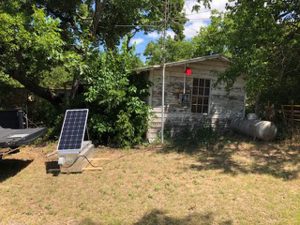
After a few technological hiccups, the state’s first permanent smog monitor built and operated by a citizens’ group is up and running in rural Southeast Wise County. And by the looks of this summer’s ozone season, just in the nick of time.

Conceived, designed, and supervised entirely by environmental scientist and UNT doctoral candidate Kari Northeim on behalf of Downwinders, the Atlas Monitoring Station is a first-of-its-kind adaptation of smaller, less expensive technology to perform the job of monitors many times its size and cost. It instantly becomes a huge milestone in our efforts to build a better system of air quality monitoring in North Texas.
The Atlas Station is a product of Downwinders’ Wise County Ozone Project, financed by a grant from Patagonia and an EarthTank prize won by Downwinders at EarthDay Texas in 2016. It’s objective is to collect continuous readings of Ozone, otherwise known as smog, in Wise County – until this week the only one of ten DFW “non-attainment” counties with no ozone monitors.
 Besides being downwind of much of DFW’s smog, Wise County is the birthplace of modern “fracking” and blistered with gas patch facilities that produce significant amounts of smog-causing air pollution. However, the nearest official smog monitors are approximately 30 miles to the east in Denton County and 20 miles south in Tarrant County. Despite past state and private computer modeling predicting smog to be worse in Wise County than the rest of North Texas when “ozone season” winds are out of the south-southeast, there’s been no monitor there to test that hypothesis. Until now.
Besides being downwind of much of DFW’s smog, Wise County is the birthplace of modern “fracking” and blistered with gas patch facilities that produce significant amounts of smog-causing air pollution. However, the nearest official smog monitors are approximately 30 miles to the east in Denton County and 20 miles south in Tarrant County. Despite past state and private computer modeling predicting smog to be worse in Wise County than the rest of North Texas when “ozone season” winds are out of the south-southeast, there’s been no monitor there to test that hypothesis. Until now. 
Accurate regional ozone readings are important to DFW because they determine how much in or out of compliance with the Clean Air Act we are. If smog levels being recorded by EPA monitors in their current locations aren’t reflective of higher smog levels actually being breathed in North Texas, then we need to know that and add more protective air pollution measures.
Last spring Downwinders bought two portable smog monitors the size of cable boxes from Colorado’s 2B Technologies at $5000 each. That’s a huge drop in price and size. Traditional EPA monitors doing the same job can cost hundreds of thousands of dollars and take up a quarter acre.
 2B factory-calibrates the monitors and they’re already certified by EPA, but from from June 2017 to March 2018, they were subject to additional testing by Kari at the University of North Texas (UNT) Engineering Lab.
2B factory-calibrates the monitors and they’re already certified by EPA, but from from June 2017 to March 2018, they were subject to additional testing by Kari at the University of North Texas (UNT) Engineering Lab.
Although small, these are incredibly reliable machines with an accuracy of greater than 1.5 parts per billion by volume, or 2% of the total reading. They measure ozone every ten seconds and can automatically average over a minute, 10 minute, or hour interval (like the state monitors do so we can compare apples to apples).
Small, portable, cheaper, but the monitors still need electricity. In order to have more siting options in a mostly rural county, the Atlas uses a 100 W solar panel to connect the monitors to the juice they need to take readings. Batteries provide back-up. This makes is a completely stand alone, self-sufficient monitoring station that we can put anywhere with a good south view.
Air is collected through a funnel and shuttled down a pipe that brings it into a weather-protected box where the monitor itself sits. 
During the Wise County Ozone Project, one monitor at a time will be deployed for a period of 3-6 months. Unfortunately, there’s not a way yet to get real time access to the monitor via the internet, so instead data will be downloaded by Kari every month and compared to readings at those Denton and Tarrant County monitors. Not perfect, but better than no monitor at all.
According to Northeim, who expects to be able to mine several scientific papers with the data she collects, “This research is critically important to develop an understanding of the true ozone exposure in Wise County. It’s very exciting.”
____________________________________________
Putting a Smog Monitor
Where No Smog Monitor Has Gone Before
EPA has 20 ozone, or smog, monitors in North Texas. Approximately half of those are considered “background” monitors on the edge of the denser urban areas. Originally the DFW “non-attainment area” for smog was only Dallas and Tarrant Counties. As the area’s populations grew, so did its air pollution problem and Denton, and Collin Counties were added, then Johnson, Parker, Rockwall, and Kaufman. Citizens petitioned and sued to bring Ellis And Wise Counties into the fold. All of these counties except Wise have an EPA smog monitor, despite Wise County being included in the non-attainment area since 2012, and despite state and private computer air modeling showing the County could have some of the region’s worst smog.
What Now?
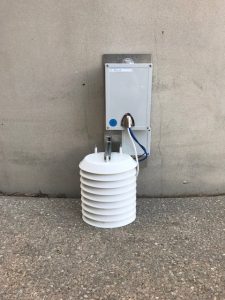
1. This monitor was built by the University of Texas at Dallas. It measures Ozone (smog) and Particulate Matter pollution. It’s already been picked-up and will be installed in Joppa in the next 30-45 days. It’s one of ten being placed around the region as part of a fledgling new air quality network. The public will be able to access its data online.
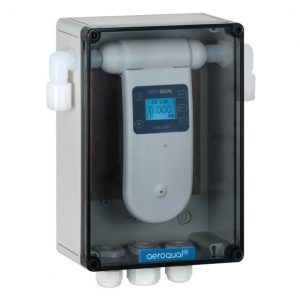 2. An Aeroqual portable Particulate Matter monitor like the ones Downwinders has already deployed inJoppa will be purchased with a protective case for use as both a mobile and stationary monitor in the community. While it records in real time, its collected data must be downloaded later.
2. An Aeroqual portable Particulate Matter monitor like the ones Downwinders has already deployed inJoppa will be purchased with a protective case for use as both a mobile and stationary monitor in the community. While it records in real time, its collected data must be downloaded later.
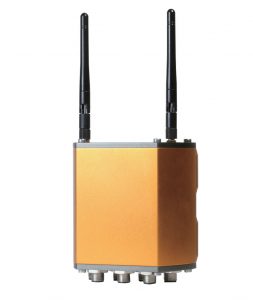 3. Beginning in the fall, five small Particulate Matter monitors will be built by UTD for distribution in a grid in Joppa. They’ll be connected to the internet by a wifi nodule which will make the data available to the public in real time. This will be a pilot test for a larger regional grid network being built by a consortium of universities and municipalities.
3. Beginning in the fall, five small Particulate Matter monitors will be built by UTD for distribution in a grid in Joppa. They’ll be connected to the internet by a wifi nodule which will make the data available to the public in real time. This will be a pilot test for a larger regional grid network being built by a consortium of universities and municipalities.
In total, by the end of the year, we plan on having seven PM monitors up and running in Joppa. Dallas County currently has one. At that point the neighborhood will be among the most “wired for air” communities in the nation. But it’s only a start to addressing the environmental racism that’s impacted Joppa residents for generations.
Highlights from the May 22 Joppa Benefit
All pics by Norman J. Jones, except Peter Johnson by Miles Moffeit. Short video of Sticks Mania drum line here.
90 second video summary of the evening by Norman J.Jones:
- L to R: Jabrille McDuffie, Natasha Dunn and Temeckia Derrough of the Joppa Freedman’s Town Association
- Solako Music in fine form
- Council Member Keven Felder rallied the troops
- Douglas Carter as Buck from “The Freedmens.”
- Kieth Price as Cato from “The Freedmens.” Both actors got a standing O at the end of their performances.
- Dean Jim Schermbeck gets a surprise from new College of Constructive Hell-Raising graduate Evelyn Mayo as fellow graduate Mellen West look on
- Vicki Larkin Tovar sings “Keeper of the Flame” at end of 2018 graduation
- Natasha Dunn of JFTA brought many to tears in her part of the presentation on what Environmental Justice would look like in Joppa
- Temeckia Derrough thanks the crowd for their support
- Rage Almight brought the house down with his performances
- Dallas civil rights icon Peter Johnson reminded the crowd of the link between the civil rights movement and the recent environmental fights in Joppa
- The Sticks Mania Drum Line kicked things off with an irresistible grove.
THANKS TO YOUR GENEROSITY JOPPA FUNDRAISING IS A SUCCESS
Thanks to Downwinders supporters and the Dallas Sierra Club that pitched in a whopping $1000, 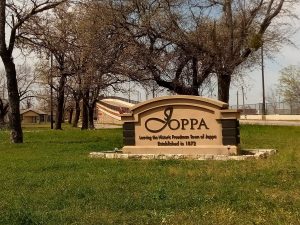 we raised the $1600 needed to buy Joppa residents their own full time Aeroqual Particulate Matter monitor. Now comes the hard part in deciding where to put it.
we raised the $1600 needed to buy Joppa residents their own full time Aeroqual Particulate Matter monitor. Now comes the hard part in deciding where to put it.
Downwinders and Joppa residents are schedule to meet to discuss the location of the monitor and the protocol surrounding the data gathering.
Unlike the monitors being proposed as the backbone of the new regional network, the Aeroqual model doesn’t connect to the Internet as it collects its data in real time. It’s readings have to be downloaded and examined offline.
There’s also the issue of whether to leave the monitor in one place or move it around the 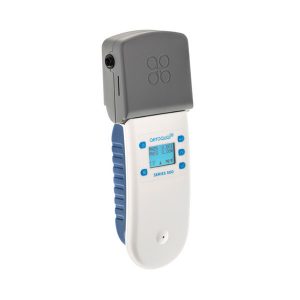 neighborhood to test where those new internet-connected network monitors might go when they get here.
neighborhood to test where those new internet-connected network monitors might go when they get here.
Nevertheless, the placement of a calibrated PM monitor taking readings 24/7 is a huge advance in public health self-protection for Joppa. And this is just the first step in what we hope will be on on-going effort to redress Joppa’s history of environmental racism.
Thanks to everyone who contributed to the effort. We’ll keep you updated.
$75,000 to Midlothian ISD Special Needs is Final Act of Clean Air Fund
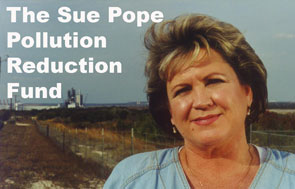 Sue Pope just said no.
Sue Pope just said no.
No to Holcim Cement Inc. No to the EPA. No to the State of Texas.
In 2000, despite intense pressure, the Midlothian rancher would not agree to allow the company’s local cement plant to double its capacity without a public hearing. When her objections were overruled and the plant became a huge source of illegal new pollution, her stubbornness was finally rewarded.
Not only did the company have to install new pollution controls; not only did it have to pay for a staff scientist for Pope and her group, Downwinders at Risk, to use for unscheduled plant inspections at Holcim. It also had to put aside $2.3 million dollars for new clean air projects in DFW.
12 years and dozens of grants later, that $2.3 million has all been spent – on things like hybrid school buses and delivery trucks, solar panels in South Dallas, energy efficiency projects in Fort Worth, public transit in Arlington and electric lawnmower trade-ins.
The only thing left to do to close out the largest and most successful endowment of its type in the state history is disburse the interest accumulated over the life of the Sue Pope Pollution Reduction Fund. That will happen today when, according to the specific wishes of Pope herself, $75,000 will be donated to the Special Needs education program in the Midlothian public schools. It’s believed to be the largest single donation to the MISD from a local resident.
“The reason I got involved in clean air issues was because of the children,” said Pope. “In the 1980’s, I began to hear of so many Midlothian area children with rare diseases and birth defects like Down Syndrome and Autism. When we started connecting these problems with local industry, I decided that something needed to be done about it.”
In a ceremony at the L. A. Mills Administration Building 100 Walter Stephenson Road scheduled for 4:45 Monday, Pope will present the check to the Midlothian School Board, some members of which were still in public school themselves when she began her crusade for clean air in the 1980’s.
Whether or not they acknowledge Pope’s original motivation, the Board is reportedly happy to accept the money that one woman’s stubbornness and – thoughtfulness – has brought them.
On Eve of Council Vote, First-Ever Monitoring Finds PM Levels Already Too High in Joppa
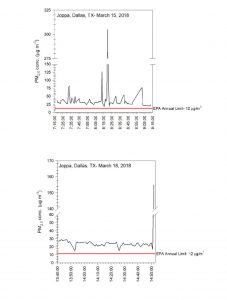 Downwinders PM Committee did the unthinkable this last week and monitored ambient air quality in the tiny Joppa community, where two proposed new concrete batch plants coming up for a Dallas City Council vote on Wednesday want to set-up shop.
Downwinders PM Committee did the unthinkable this last week and monitored ambient air quality in the tiny Joppa community, where two proposed new concrete batch plants coming up for a Dallas City Council vote on Wednesday want to set-up shop.
This was unthinkable because despite months of controversy over the siting of yet more concrete batch plants in a predominantly-minority neighborhood already jammed with heavy industry nobody had thought of doing it before our team of SWAT Citizen Scientists showed-up.
Not the batch plant operators seeking approval of their permit requests.
Not the staff of the City of Dallas, who are recommending approval of those requests.
No…it was our all-volunteer “Soot Sisters” armed with their newly acquired fully-calibrated portable PM monitors who had the audacity to actually see what levels of pollution Joppa residents were breathing now – before the addition of any new sources of bad air.
After we got our results, we kind of understand why air monitoring was unthinkable to those other folks: because the air in Joppa is often unbreathable.
Since our monitors arrived late to the scene in Joppa, we’ve only been able to get snapshots of air quality before the scheduled council vote in the 28th. Two hours on this day, another two on that day. The sample is very small, but it’s also very disturbing.
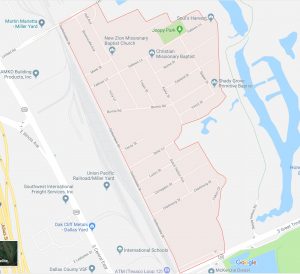
Joppa is already surrounded on three sides by heavy industry
First, they found significantly higher levels of ambient PM pollution in Joppa than was recorded by the only official EPA PM monitor in Dallas, located near Stemmons Freeway during the same time period, and higher than the levels the Committee found at various DART bus stops and routes they’ve also been monitoring as part of the new Green Streets bus electrification campaign
Levels in Joppa were as much as 30 to 50 % higher than the EPA monitor – even on a Sunday. Residents there are already breathing more PM pollution than residents in other parts of the city.
Secondly, if the Committee’s results were extrapolated over the course of a full year, these daily levels would add up to a violation of the EPA’s annual PM pollution standard. That is, if our findings are indicative of daily exposure, Joppa could already be exceeding the EPA standard and any additional PM pollution would only make matters worse.
You can read the entire short report on Joppa, Round one, prepared by Dr. Tate Barrett, our PM Science Director here: Joppa Report #1

Shannon Gribble and Cresanda Allen on a monitoring run in Joppa
Because there’s been no monitoring in Joppa until now, it’s possible the area has been in routine “non-attainment”of the EPA PM standard. It takes three years of annual averages above the standard, recorded at an officially designated EPA monitor, to classify an area as non-attainment and qualify for new federal new controls. However, Dallas’ only official EPA PM monitor is nine miles north of Joppa near Stemmons Freeway and Mockingbird.
Study after study has shown how People of Color generally, and African-Americans specifically, are disproportionately exposed to, and harmed by, PM pollution. While Dallas’ one and only EPA-designated PM monitor could be accurately recording PM levels north of the Trinity River, it’s not reflecting the reality of residents in Joppa, West Dallas, Cadillac Heights, or Cedar Crest.
There’s been a lot of discussion recently concerning inequity of resources in Dallas. It’s not news that this inequity extends even to the very air residents breathe and how the current regulatory system ignores those differences. But our Joppa monitoring casts a new spotlight on that fact. No equal protection is possible unless you have equal access to official monitors which determine enforcement of the laws.
That’s why when we turned our first results over to District 7 Council Member Kevin Felder on Friday, we recommended the City either consider moving Dallas’s sole EPA-designated PM monitor to Joppa, or pay for a second EPA-designated PM monitor to be located in Joppa, to begin recording data as soon as possible to determine if the area is indeed violating the EPA PM standard year-round.
These Joppa results also become another compelling example of why DFW needs its own local air quality monitoring network. It’s ridiculous that there’s only one PM monitor for all of Dallas County’s 2. 5 million residents stretched out over 900 square miles. PM levels as low as 5 ppb
Downwinders has joined with local universities and governments in pursuing the establishment of a local air quality monitoring network that could place inexpensive year-round PM monitors throughout Dallas and North Texas with real time information accessible to the public by a simple phone app. Dallas County Commissioner Theresa Daniels is expected to sponsor a resolution for the creation of such a network at the Commissioners Court in the coming weeks.
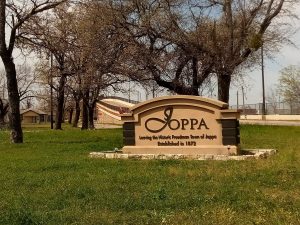 Dallas should follow. The City’s Office of Environmental Quality approves or disapproves of zoning changes like the ones being sought by the batch plants in Joppa without knowing what environmental burdens residents are already carrying. Even though they have the ability and capacity to do real time monitoring of neighborhoods where new industry wants to expand or locate, the OEQ never does. Nor does it have a single toxicologist or public health expert on its staff who’d want to see that kind of information before passing judgement on a zoning request. Instead it’s headed up by a lawyer and is mostly concerned about not making any definitive statements about local environmental health problems or environmental justice issues at all. With all the house-cleaning at Dallas City Hall since a new city manager took control, the OEQ now looks to be one of the last repositories for Business As Usual thinking. That must change.
Dallas should follow. The City’s Office of Environmental Quality approves or disapproves of zoning changes like the ones being sought by the batch plants in Joppa without knowing what environmental burdens residents are already carrying. Even though they have the ability and capacity to do real time monitoring of neighborhoods where new industry wants to expand or locate, the OEQ never does. Nor does it have a single toxicologist or public health expert on its staff who’d want to see that kind of information before passing judgement on a zoning request. Instead it’s headed up by a lawyer and is mostly concerned about not making any definitive statements about local environmental health problems or environmental justice issues at all. With all the house-cleaning at Dallas City Hall since a new city manager took control, the OEQ now looks to be one of the last repositories for Business As Usual thinking. That must change.
Downwinders PM Committee was back out in Joppa this last weekend for more rounds of air monitoring. Those results will be dowloaded and analyzed by Dr. Barrett and presented to the City Council on Wednesday by PM Committee member Misti O’Quinn. Stay tuned.
Two of these “Soot Trackers” Are On Their Way to Downwinders…and You
 Thanks to a grant from the Simmons Sisters Foundation, Downwinders is proud to announce we’ve purchased our first two portable Particulate Matter sensors for our No Safe Level Campaign against PM pollution.
Thanks to a grant from the Simmons Sisters Foundation, Downwinders is proud to announce we’ve purchased our first two portable Particulate Matter sensors for our No Safe Level Campaign against PM pollution.
They’ll be the only PM monitors of their kind in the region, and their arrival will inaugurate a new era in DFW citizen-empowered science.
The sensors are made by AEROQUAL, a New Zealand company, and you can’t find them on Amazon. They measure both PM 10 and PM 2.5 (microns) at the same time. Their sensor heads use laser and optical sensors to measure light scattered from particles passing through the laser beam. A built-in fan ensures a stable and precise flow of sample air to the sensor. They also compensate for humidity by way of an on-board humidity sensor.
Each comes with a long-life Lithium battery which allows for 24 hours of remote operation between charges. Recharging takes just 3 hours. The monitor can be plugged-in and left to run indefinitely. Besides displaying levels in real time, measurements can be stored on the device and downloaded later to a computer via the USB cable and bundled software.
They come factory-calibrated to European Union standards and are capable of being re-calibrated for side-by-side use with an EPA monitors, or any other local baseline. 
These monitors have two parts – a base and a a detachable sensor head – making them even more useful. In the future Downwinders can buy other kinds of sensors from AEROQUAL to plug into the base and test for gaseous pollutants like Ozone, or Sulfur Dioxide. In all, 28 other sensors are available.
Before now you either had to buy $16,000 PM sensors that were fully calibrated or settle for much less reliable equipment. But the technology is moving so quickly and demand is scaling up so fast that a middle-income niche market for scientifically-rigorous instruments is beginning to provide opportunities to non-profit groups like Downwinders, and the public in general.
Along with these portable sensors, we’re also ordering stationary PM monitors as part of the regional network being established by UTD and others.
As a result of this influx of technology, Downwinders is creating a PM Project Science Director position to maintain the integrity of our research. The Science Director will be in charge of these monitors, training citizens on how to operate them, and overseeing their use in the field.
Our plans are to begin using the sensors in neighborhoods and suspected hot spots as soon as possible to help us fill out our PM Map of DFW. We want to be able to loan them out to those citizens who’ve gone through the training and have a problem they want to investigate. They’ll also be available for use during accidents, explosions, and fires.
We’re not letting state and EPA rollbacks stop us. We’re creating our own regional air monitoring network. Are you interested in joining? Stand by. We’re just getting started.
How Do You Make Progress in the Trump Era? Two Words: Particulate Matter
Public Health
Economic Development
Transportation
Housing
Childhood Development and Education
Environmental Justice
Crime
In the same way lead exposure was linked to lower IQ in children and anti-social behavior like crime, PM Pollution is now being linked to learning disabilities and juvenile delinquency.
And in the same way public health mandated the removal of lead from gasoline and paint, many public policy measures are needed to help eliminate PM pollution exposure.
Many if not most of these are local in nature. They don’t need EPA or TCEQ approval.
__________
In California, buffer zones between new homes and freeways are under consideration because so many 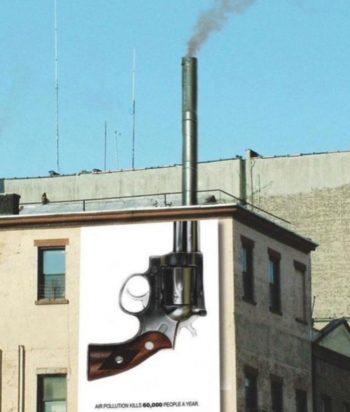 studies have shown children living next to freeways suffer significantly higher rates of Autism and learning disabilities.
studies have shown children living next to freeways suffer significantly higher rates of Autism and learning disabilities.
Some local governments, school districts, and public transit agencies, including DART are beginning to electrify their bus fleets to reduce exposure to PM pollution and save money. “No idling zones” around schools and are being enlarged.
In DFW, Downwinders is sponsoring a broad public health initiative aimed at identifying and reducing PM Pollution from all sources, called “No Safe Level.”
Just as PM pollution poses all kinds of adverse health effects it also provides lots of opportunities at the local level to make things better for your neighbors:
Safer homes and schools.
More sustainable public transit.
More equitable zoning.
Pollution controls.
Public Health protections in the neighborhoods that need them most.
We can make progress. But we need your help.

“NO SAFE LEVEL”
Particulate Matter
CAMPAIGN MEETING
SATURDAY, JANUARY 27th
2 – 4 PM
Hill Country Room
Meadows Conference Center
2900 Live Oak in Old East Dallas
Get the Basics on PM
Help Pick Campaign Targets and Create Strategies for Change
Your Hosts, Our No Safe Level Committee members:
Cresanda Allen
Shannon Gribble
Amanda Poland
Evelyn Mayo
Misti O’Quinn
FOLLOW-UP: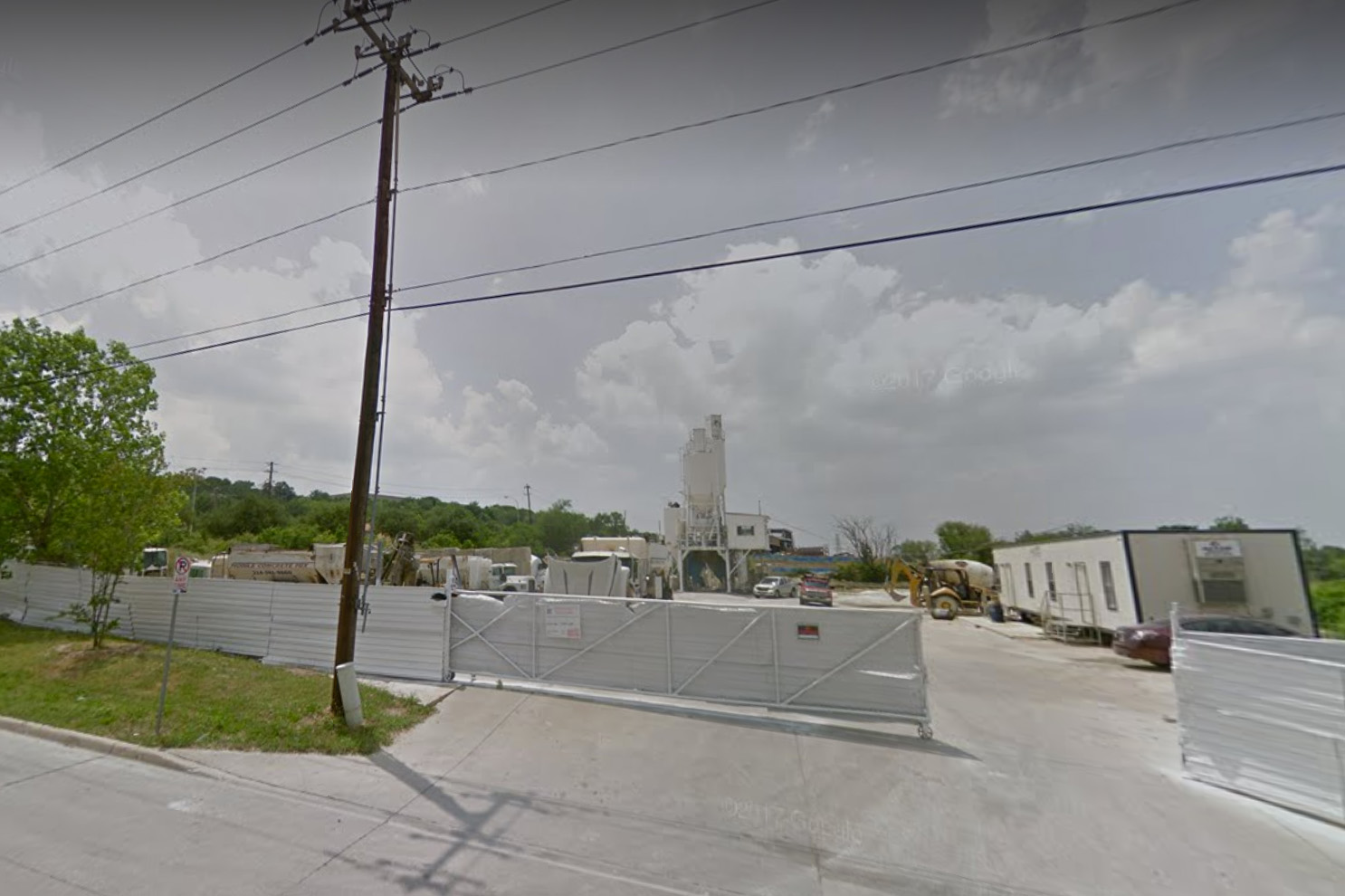 West Dallas residents won their fight to close the RamCrete batch plant at the January 10th Dallas City Council meeting. The vote was 14-1 with Council Member Rickey Callahan the lone outlier. However, The City’s Office of Environmental Quality didn’t distinguish itself when a spokesperson reassured Callahan that any facility meeting TCEQ standard exemption permit levels of pollution “could not be causing a problem.”
West Dallas residents won their fight to close the RamCrete batch plant at the January 10th Dallas City Council meeting. The vote was 14-1 with Council Member Rickey Callahan the lone outlier. However, The City’s Office of Environmental Quality didn’t distinguish itself when a spokesperson reassured Callahan that any facility meeting TCEQ standard exemption permit levels of pollution “could not be causing a problem.”


